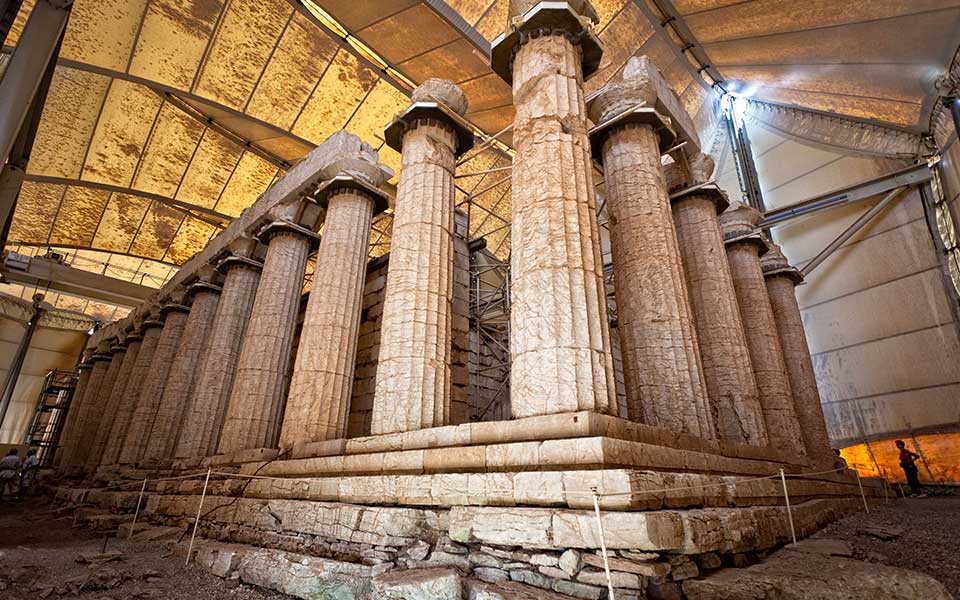Tucked away in the rugged mountains of southwest Arcadia in the Peloponnese stands a marvel of ancient Greek architecture, the Temple of Apollo “Epikourios” at Bassae. Designated as a UNESCO World Heritage Site in 1986 – the first Greek site to be inscribed on UNESCO’s List – this magnificent temple is often referred to as “The Parthenon of the Peloponnese,” owing to its architectural grandeur and historical significance.
Though geographically distant from major ancient Greek city-states, at the crossroads of the regions of Ilia (Elis), Arcadia, and Messinia, the venerable temple, now covered with a protective tent, stands out as one of Greece’s most studied monuments. Its unusual architectural and artistic elements have made it a focal point for researchers and archaeologists for centuries, seeking to better understand the complexities of ancient Greek architectural techniques and the development of religious art.
In the following sections, we’ll explore the rich history, architectural features, and cultural importance of this remarkable monument, which, next to the Temple of Hephaestus in Athens, is one of the best preserved temples in Greece.
In Perfect Harmony
The Temple of Apollo at Bassae was constructed in the latter decades of the 5th century BC, during the High Classical period of ancient Greece. Most scholars agree that it was built during the Peloponnesian War (431-404 BC), fought between Athens and Sparta and their respective allies.
Built atop the western slope of Mount Kotilion, 1,131m above sea level, the temple is in perfect harmony with its surrounding landscape, boasting panoramic views of the Arcadian highlands. Scholars believe its construction was commissioned by the people of the nearby city-state of Phigaleia, 13km southwest.
According to the Greek traveler Pausanias, writing in the 2nd century AD, the temple was the work of the renowned Iktinos, architect of the Parthenon, although some modern historians doubt this to be true, due to subtle but significant differences in design.
Whoever built it, Pausanias believed it to be among the finest temples in the Peloponnese:
“Of the temples in the Peloponnesos, this might be placed first after the one at Tegea for the beauty of its stone and for its symmetry.”
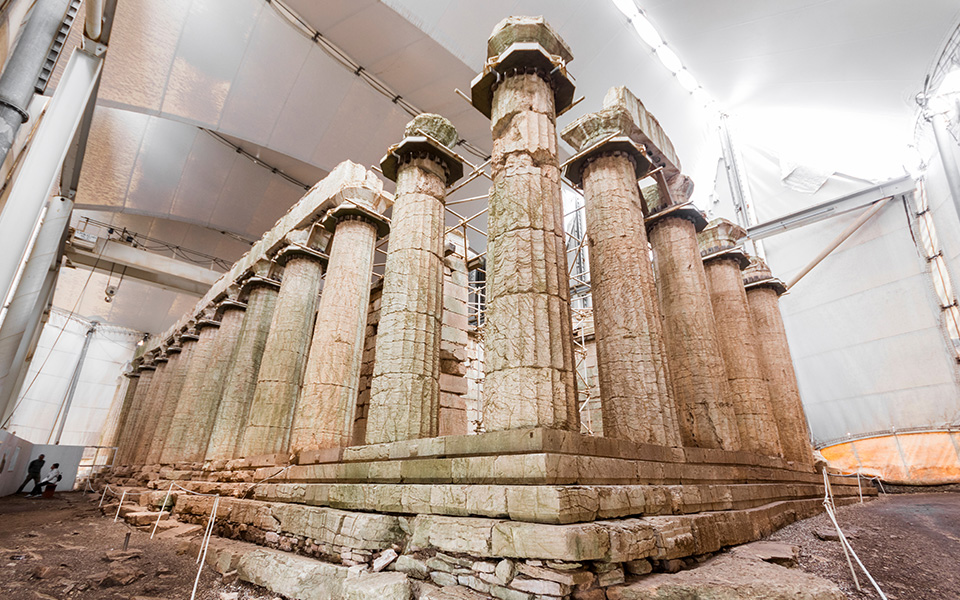
© Shutterstock
A Plague Temple?
Its remote location and the dedication to Apollo Epikourios (“Apollo the Helper”) suggest that it was built to commemorate a military victory. In his famous “Description of Greece,” Pausanias notes that the Phigaleians fought several wars and revolts against Sparta in the 7th and 6th centuries BC, and ca. 421-414 BC, during the Peloponnesian War, and again in its immediate aftermath, ca. 401-395 BC.
Mercenaries from various city-states in Arcadia are also known to have fought for Messinia in their many wars against Sparta. As such, the epithet “epikouros” may simply refer to “an ally” or “mercenary,” commemorating the exploits of Phigaleian troops.
Another scenario is that it was built to offer thanks for deliverance from a deadly plague that afflicted the region. In the same passage as above, Pausanias describes how Apollo saved the Phigaleians from a plague, in the same way he had helped the Athenians – a reference to the the most lethal pandemic in Classical Greek history (the Plague of Athens, 430-427 BC), which wiped out nearly one third of the city’s population:
“Apollon received his name from the help he gave in time of plague, just as the Athenians gave him the name of ‘Alexikakos’ (Averter of Evil) for turning the plague away from them. It was at the time of the war between the Peloponnesians and the Athenians that he also saved the Phigaleians …”
As a sanctuary dedicated to Apollo, the patron god of music, poetry, and prophecy, pilgrims from across the Greek world would have traveled to Bassae to seek solace and guidance. Devotees brought offerings to the god as tokens of their devotion and gratitude, ranging from simple gifts of food and wine to elaborate votive offerings such as statues, jewelry, and weapons and armor. In return for their offerings and prayers, worshippers believed that Apollo would grant them his favor and protection.
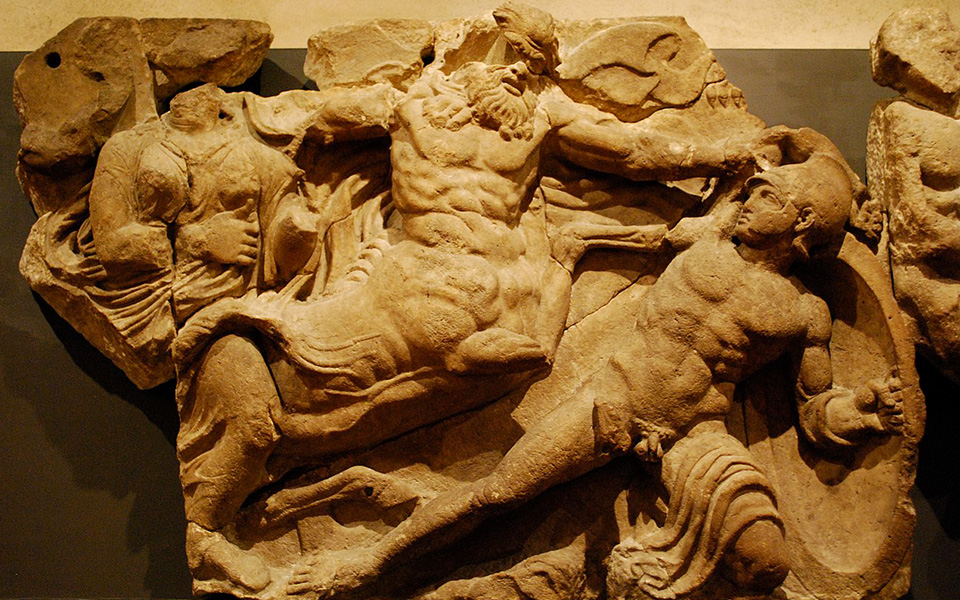
© Sarah Murray / Public domain
Non-Canonical Features
The temple at Bassae was built on the site of an earlier, smaller version (600-570 BC) and boasts several unique architectural features that set it apart from other temples in Greece.
Unlike the majority of temples, which were constructed on an east-west axis, Bassae is aligned north-south, with its principal entrance from the north. This unusual orientation was necessitated by the limited space available on the steep western slope of Mount Kotilion. A door was placed on the east side of the temple, possibly to allow the morning sun to illuminate the cult statue inside.
The temple consists of three main sections: the “pronaos” (entrance), the “naos” (inner chamber), and the “opisthodomos” (rear room). Constructed almost entirely out of locally sourced grey Arcadian limestone-schist, the temple at Bassae is relatively modest in size. Its stylobate (stepped base) measures 38.3 by 14.5m and contains a Doric peristyle (outer colonnade) of six by fifteen columns.
Unusually, the interior ceiling was made entirely of stone, including the beams and rafters; a remarkable feat of architectural engineering. While it has been proposed that there was a central open space in the roof to admit light and air, there is no definitive proof of this feature.
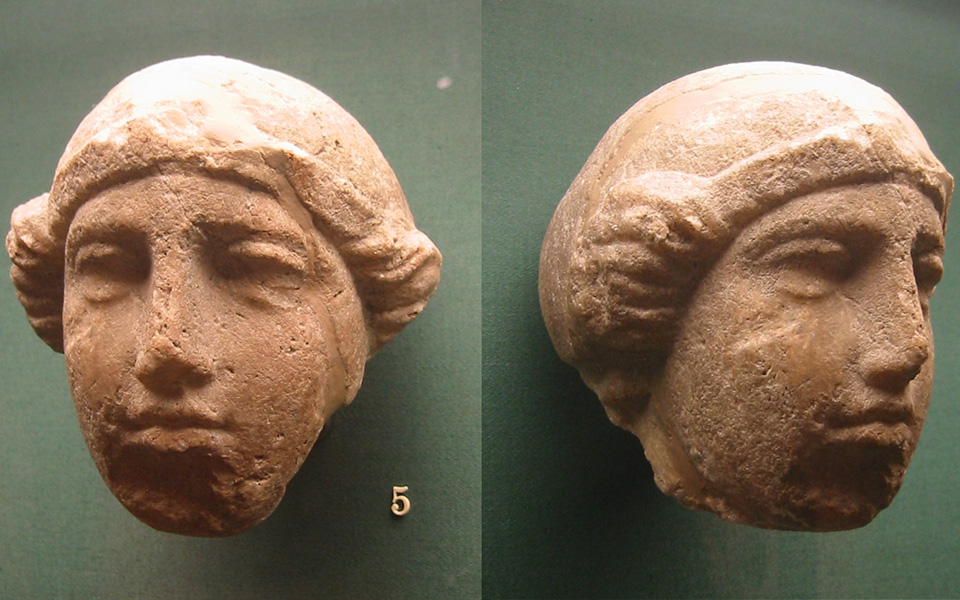
© Public domain
A Stylistic First
One of the most remarkable features of the temple at Bassae is its incorporation of all three classical orders of ancient Greek architecture: Doric, Ionic, and Corinthian. The peristyle is formed by Doric columns, while Ionic columns support the interior.
Inside the naos, a single Corinthian column once stood, possibly intended as an aniconic representation of Apollo Borealis (“Apollo of the Cold North Wind”). The column’s capital, decorated with acanthus leaves, is the earliest known example of this order found to date. It is said that it reflected the first rays of the sun on the Summer Solstice, representing the eternal Apollonian light.
While relatively sparsely decorated on the exterior, the temple’s interior featured a continuous Ionic frieze depicting scenes from Greek mythology. Of the 23 marble slabs of the frieze, 12 tell the story of the battle between Greeks and Amazons (Amazonomachy) and the remaining eleven present the mythical battle between Lapiths and Centaurs (Centauromachy). Other scenes, depicted on the metopes of the pronaos, portray the Dioskouroi (Castor and Pollux) raping the daughters of Leucippus, a king of Messenia, and Apollo returning from Mount Olympus.
Sadly, the slabs of this 31m-long frieze were first revealed and then plundered by English architect and writer Charles Robert Cockerell in 1811-1812, and are now housed in the British Museum – an act that mimics the controversial removal of the Parthenon Marbles by Lord Elgin in the first years of the 19th century.
On his return to England, Cockerell made plaster casts of the frieze, which can be seen today in the Ashmolean Museum’s Great Staircase in Oxford and the Travellers Club in London.
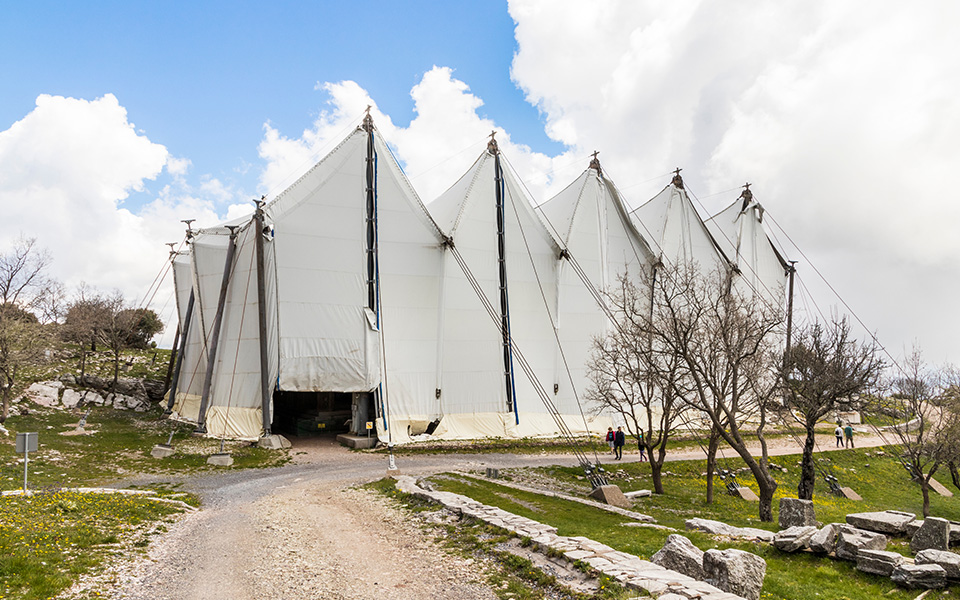
© Shutterstock
Rediscovery and Restoration
In the early Christian era, the venerable temple was eventually abandoned and fell into disrepair, its once majestic roof collapsing into the interior, causing extensive damage. Despite this, the outer colonnade (peristyle) remained standing, a silent witness to the passage of centuries.
For some fifteen hundred years or so, the temple remained largely forgotten, until, in 1765, British architect and antiquarian James Stuart, along with his colleague Nicholas Revett, stumbled upon its ruins while conducting a survey of ancient Greek architecture. Their discovery marked the beginning of a new chapter for the ancient site. Excavations commenced in the early 19th century and continued for several decades, revealing many of the temple’s original architectural elements and sculptures.
However, the temple’s journey from ruin to restoration was not without its challenges. Natural disasters, vandalism, and the relentless march of time threatened its survival. Yet, thanks to ongoing restoration efforts, much of the temple has been preserved for future generations.
Beginning in 1902 and lasting until 1908, the first serious restoration effort aimed to stabilize the temple’s structure and repair damaged architectural elements. This was only the beginning of a series of efforts to safeguard the temple. From 1982 to 1997, further measures were taken to ensure the temple’s longevity. An anti-seismic scaffold was installed in 1985, followed by the installation of lightning protection in 1986. In 1987, a temporary shelter (tent) was erected to shield the temple from the region’s extreme weather conditions.
These restoration efforts, spearheaded by the Greek Ministry of Culture and in collaboration with international organizations such as UNESCO, have been vital in preserving this important cultural landmark for future generations.

